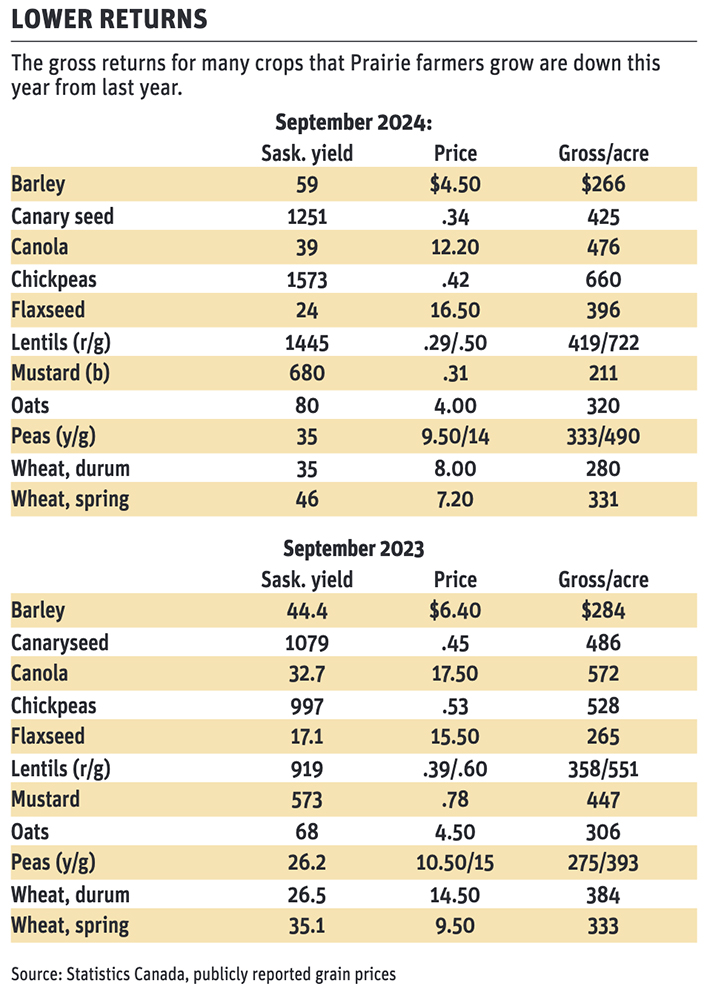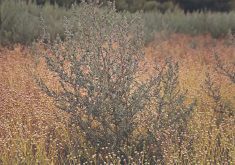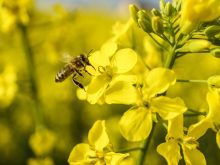You’d think higher yields would mean higher returns per acre. Unfortunately, data for Saskatchewan shows the benefit of this year’s higher crop yields is often negated by lower prices.
Using Statistics Canada estimated yields and comparing them to the estimated yields from one year ago, all crops are showing a significant increase. It should be noted that the Statistics Canada yields vary from those being estimated in Saskatchewan Agriculture’s crop report. For instance, the provincial ministry estimates a canola yield of 34 bushels per acre while Statistics Canada is at 39.
While yields are up, prices are all down. Based on publicly reported prices, canola was $17.50 a bu. at this time last year, while it’s currently around $12. Therefore, its gross return — yield times price — is down dramatically. With canola being such a major crop, this has huge ramifications for overall farm income.
Read Also

Budget seen as fairly solid, but worrying cracks appear
The reaction from the agriculture industry to prime minister Mark Carney’s first budget handed down November 4th has been largely positive.
The bad news continues with other crops.
Durum prices are down more than $6 a bushel, dramatically dropping durum returns despite a higher provincial yield.
Mustard has transitioned from highly profitable to a money loser with a crash in price levels.
Spring wheat prices are more than $2 a bu. lower, but with the better yield, the gross return is very similar to last year.
The same is true for feed barley. A much better yield is largely compensating for a price decline of around $2 a bu.

Oats also pencil out very similar to last year.
Based on yield estimates and current prices, gross returns per acre are higher this year for lentils, chickpeas, flax and field peas.
Canaryseed, chickpeas, lentils (red and large green) and mustard (brown) have yields in pounds per acre and prices in cents per pound. Other crops are in bushels.
No distinction is made in the StatCan yield estimates for red versus green lentils or yellow versus green peas. However, the prices are dramatically different, producing very different returns.
Kevin Hursh is an agricultural journalist, consultant and farmer. He can be reached by e-mail at kevin@hursh.ca.
















